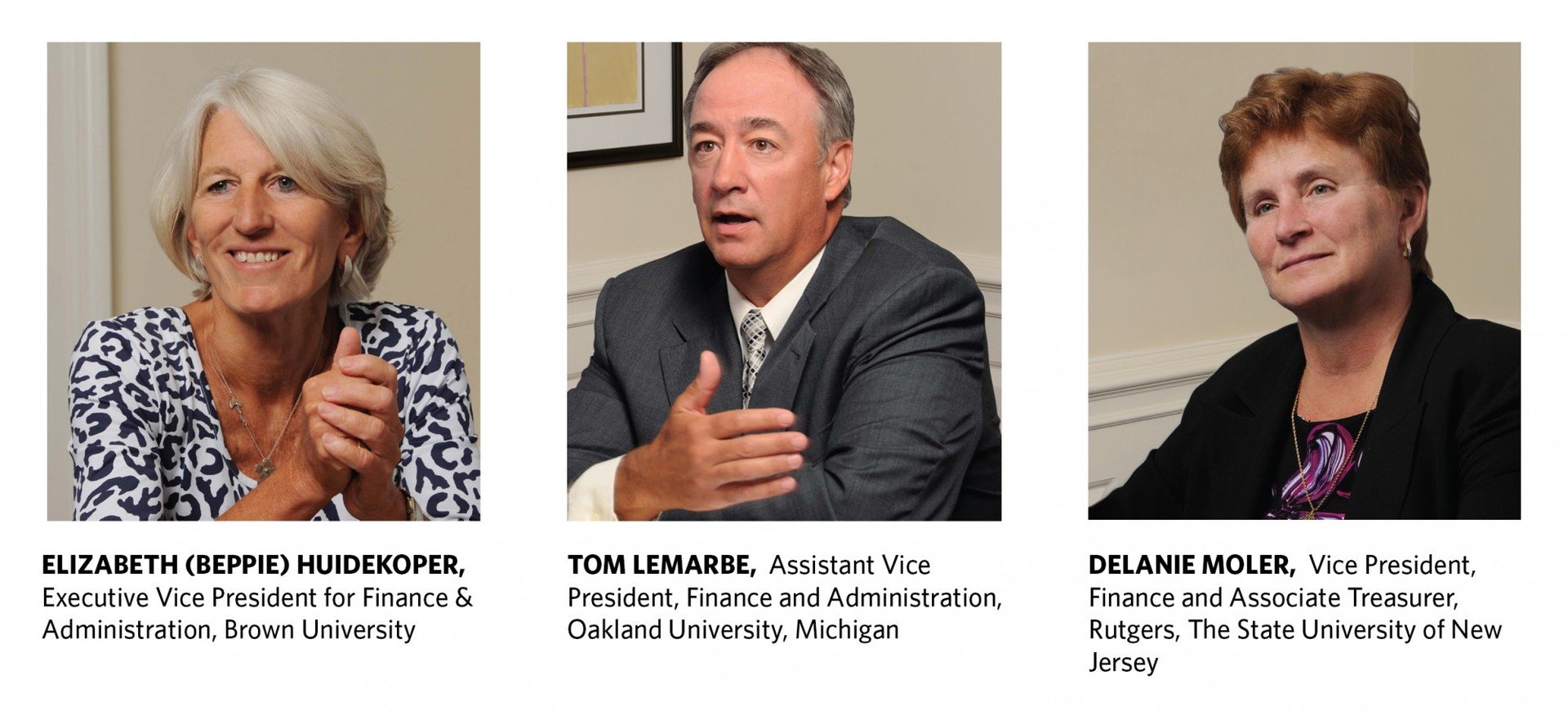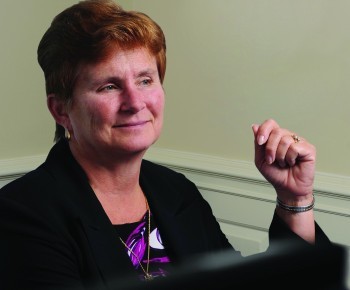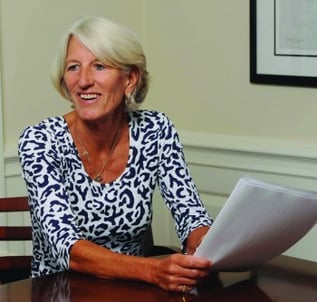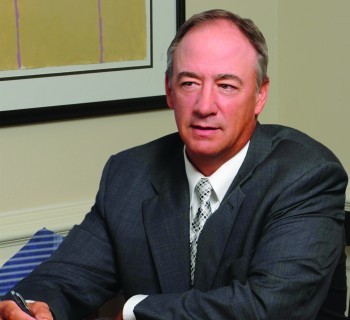On campus, the thinking about operating asset management is changing with the times.
In the wake of the 2008 financial crisis and Great Recession, liquidity was the primary concern on university campuses, and it remained so in the years that followed. Gradually, however, things began to change. The prolonged zero interest rate environment meant that being too liquid and too conservative resulted in a negative return in real terms. In many cases, the problem was compounded by working capital balances that had grown substantially. Over the past year-plus, many institutions have begun to think differently about their working capital—mindful of operating priorities, but opening discussions about better ways to balance liquidity, risk and return.
To discuss the state of treasury today, Commonfund recently convened a roundtable discussion among three leaders in operating asset management for colleges and universities.
The roundtable participants are:

The roundtable was moderated by JON SPEARE, Managing Director, Treasury Specialist, Commonfund. Excerpts from the panelists’ exchange follow.
SPEARE: LOOKING OUT IN THE ROUGHLY TWO- TO FIVE-YEAR TIME FRAME, WHAT DO YOU SEE AS THE BIGGEST CHALLENGE FACING COLLEGE AND UNIVERSITY TREASURERS?
MOLER: I see several “biggest” challenges: increased regulation and oversight, trying to tie state appropriations to student performance, trying to do more with fewer resources—both human and financial—and tying our financial assets to something other than numbers of students and employees. Finally, after being in this environment of low interest rates for so long, we are looking for the cash to help balance our budget shortfalls.
HUIDEKOPER: I’m concerned about federal funding which has dropped a lot at Brown over the last two years and about net tuition income. Despite the fact Brown is very fortunate to have as many applicants and people wanting to attend as it does, our undergraduate financial aid expenses went up by about 6.5 percent last year. That’s unsustainable. I’m concerned about those trends, but also about getting our internal communities to understand that these challenges are real and need to be faced. I think the change that we need to make is getting our community to understand and address the economic realities.
LEMARBE: One thing that keeps me up at night is our need to raise funds and build our endowment over time. We have a small endowment, and with the price of higher education continuing to go up we don’t have the financial strength to support a deep pool of scholarship funds. From the state standpoint, each public university in Michigan is autonomous. We are free to set our prices and make other decisions outside of a central state governing authority for higher education. However, that doesn’t stop the legislature from passing budgets that contain both performance funding and tuition restraint/price controls. Tying those together has hurt growing schools like Oakland because we only get 18 percent of our general fund budget from state appropriations. The other 82 percent comes from students. We in the education community are on board with our elected officials when it comes to holding down the cost of higher education. At the same time, we can’t allow quality to degrade. That’s the conundrum we face.
SPEARE: WHAT CHANGES ARE HAPPENING CURRENTLY IN TREASURY MANAGEMENT TO MEET THESE CHALLENGES?
MOLER: We need to take on a lot more technology to help us in the treasury management area. We don’t use technology to its fullest, and that is going to be the push here at Rutgers.
HUIDEKOPER: We have a relatively new president who has articulated a strategic vision to deal with many issues, including the economic trends that have proven problematic for Brown. What we need to do over the next year is develop more realistic operating, financial, fund-raising and capital plans to get us back into a balanced budget mode, while also enabling us to achieve our strategic priorities.
LEMARBE: There’s nothing pressing from a structural standpoint in terms of how we’re managing our endowment or our working capital. But we do have many new people—our president, our provost and three deans. So, we need to educate the senior leadership here in terms of our resources and our resource allocation systems, all the way down to our budget development model.
 SPEARE: WE FIND THAT SOME INSTITUTIONS ARE THINKING MORE STRATEGICALLY ABOUT THEIR WORKING CAPITAL, PARTICULARLY AS CASH LEVELS HAVE TENDED TO INCREASE IN RECENT YEARS. IS THIS OCCURRING AT YOUR INSTITUTION?
SPEARE: WE FIND THAT SOME INSTITUTIONS ARE THINKING MORE STRATEGICALLY ABOUT THEIR WORKING CAPITAL, PARTICULARLY AS CASH LEVELS HAVE TENDED TO INCREASE IN RECENT YEARS. IS THIS OCCURRING AT YOUR INSTITUTION?
MOLER: It has at Rutgers. Our new president has launched a strategic plan for the university and it will have a lot of impact as any new initiatives must have funding. We decided that we needed to think a lot more strategically about our cash and make it work harder for us.
HUIDEKOPER: Our working capital is a little less tied to the strategic plan; it’s more tactical and aligned with the operating plan. When I think of strategy, I’m thinking out three, five, 10 years. Our use of working capital is a little more constrained by our operating need for income.
So, we think in terms of the risk we are willing to take, linked to operating liquidity but also linked to liquidity needs for the endowment and rating agency requirements. We provide self-liquidity, which, in fact, is what we’re looking at right now. We want to invest some of our cash, whether it’s in our working capital or in our endowment, more aggressively. We’re trying to maximize returns at all times to help the institution to achieve its strategic goals.
LEMARBE: We’re probably the reverse of most mature universities where the endowment far exceeds the working capital. Ours is the other way around because we’re only 57 years old. We’ve had tremendous growth, and that growth has driven our liquidity requirements higher. So, what has happened along the way over the last 20 years is we’ve been slowly layering our working capital portfolio structure to take advantage of higher and higher amounts of temporarily idle cash. Plus, when I started here in 1994, we had no debt. Now we have a $250 million debt portfolio, and so our debt has grown consistent with our working capital portfolio.

— Delanie Moler, Rutgers University
SPEARE: DELANIE AND BEPPIE, IS YOUR LEVEL OF WORKING CAPITAL TO DEBT THE SAME TYPE OF RATIO?
MOLER: Our investments and debt are pretty much equal if you combined endowment and working capital, at around $2 billion. Our working capital is about a quarter of that.
HUIDEKOPER: Our endowment right now is close to $3 billion, our debt is close to $800 million, and our working capital, which, of course fluctuates, is about $150 to $300 million.
SPEARE: TODAY, WHEN YOU TALK ABOUT THE CURRENT ENVIRONMENT IT’S ESSENTIALLY ONE OF ZERO RATES. SAME FOR THE LAST FIVE YEARS. HOW DID YOU MANAGE THROUGH THIS? DELANIE, YOU’VE MADE SOME CHANGES RECENTLY. WAS IT THE LOW-RATE ENVIRONMENT THAT FINALLY MADE YOU DECIDE ENOUGH IS ENOUGH?
MOLER: It was the low-rate environment. But it was also a new senior VP who came in with a different cash management perspective. There was also the fear, which I believe is coming to fruition, of the new rules surrounding money market funds. If we’re going to be subject to volatility in the asset values of our money market funds, then we might as well be owning securities that fluctuate also.
 SPEARE: BROWN HAS TAKEN SOME RISKS IN OPERATING ASSETS AND WORKING CAPITAL. HAS YOUR RISK TOLERANCE CHANGED SINCE 2008?
SPEARE: BROWN HAS TAKEN SOME RISKS IN OPERATING ASSETS AND WORKING CAPITAL. HAS YOUR RISK TOLERANCE CHANGED SINCE 2008?
HUIDEKOPER: I think it’s changing. We were much more risk-averse for the first two or three years after the financial crisis. We also borrowed to create a liquidity reserve, and we have been investing those funds very conservatively. I know some of our peers who borrowed taxable debt and put it into their endowment…and made a killing and then paid off the debt. We haven’t done that. We were more conservative right up until this past year and are now a little more aggressive. But that’s more on the endowment side. On the operating cash side we remain pretty conservative.
SPEARE: TOM, ANY CHANGES IN PHILOSOPHY OR RISK TOLERANCE IN OAKLAND’S OPERATING PORTFOLIO?
LEMARBE: We needed to build up an equity layer in our working capital, versus just letting it sit in money markets or government bonds, but it wasn’t necessarily a result of 2008. It was more because liquidity levels were growing and we needed to realize better returns. For me, the question about the zero-rate environment is not simply on the return side because we are both buyers and sellers. We’ve been able to borrow at very low rates. I’m not as concerned that we’re not earning anything on our money market funds when we’re able to borrow for construction projects at much lower rates. I’m no better off if I can earn 2.5 percent on a money market fund if it’s going to cost me 6.5 percent on a tax-exempt borrowing.

- Tom LeMarbe, Oakland University
SPEARE: WHETHER IT’S A POLICY OR A DISCUSSION WITH YOUR TREASURY TEAM, IS THERE SOMETHING THAT YOU JUST CAN’T RISK, PERHAPS IF IT COULD LEAD TO A LOSS IN THE OPERATING CAPITAL PORTFOLIO?
LEMARBE: The short answer is, we cannot violate our board-approved working capital investment policy. That policy is pretty conservative; for example, we can’t have more than a 30 percent allocation to equities. That may seem like a lot, but when you couple that with some other restrictions it is actually quite conservative. For example, we’re not allowed to purchase commodities or commodity futures, high-risk debt or any directly owned real estate. So, I won’t say we can’t lose money, because, obviously, we can’t promise that. But we’re comfortable that we will be okay if we stick to our policy.
MOLER: Prior to our new senior VP coming on board, it would have been as you said—we cannot take a loss on our working capital portfolio because Rutgers is on a cash basis. The university just did not understand the concept of total return where you could sell something at a loss but invest the proceeds at a higher rate and make money. Now, we’re not going to make big bets, but we have opened ourselves up to allow some quality equities and look at some diversifying strategies that we never considered before.
 SPEARE: LET’S GO FROM RISK TO THE OTHER SIDE OF THE EQUATION. OVER TIME, WHAT IS IT THAT YOU’RE HOPING TO ACHIEVE WITH YOUR WORKING CAPITAL PORTFOLIO IN THE LIQUID, ONE- TO THREE-YEAR LAYERS AND THE THREE- TO FIVE-YEAR LAYERS?
SPEARE: LET’S GO FROM RISK TO THE OTHER SIDE OF THE EQUATION. OVER TIME, WHAT IS IT THAT YOU’RE HOPING TO ACHIEVE WITH YOUR WORKING CAPITAL PORTFOLIO IN THE LIQUID, ONE- TO THREE-YEAR LAYERS AND THE THREE- TO FIVE-YEAR LAYERS?
MOLER: First and foremost, ensuring that we can meet payroll. We need to have enough liquidity to meet our payments, meet our bills, and our vendors, our debt service. And then earn a reasonable return. For us, we think that our working capital should earn something around Treasuries plus 125–150 basis points.
LEMARBE: As Delanie mentioned, the first call on our portfolio is making sure we can pay our bills and make payroll. So, on the short end, that’s how we manage the portfolio. Longer-term, we look at 4 percent as our threshold, because when we look at our overall debt portfolio, that’s about what it’s costing us to have $250 million of debt on the street. So, 4 percent is sort of the benchmark that we’re using. It’s not in our board policy, and we don’t have a “Treasuries-plus” in our board policy either. But, we’re happy if we can generate the same amount of return that we’re paying on the debt side.
HUIDEKOPER: We generate about $150 million of income from our endowment and we are very dependent on that income. But I think all the other things hold true as well. We definitely want to make sure we have the liquidity to meet the payroll and all the rest. And we also need to meet rating agency requirements at the same time.

— Beppie Huidekoper, Brown University
SPEARE: DO YOU WORRY ABOUT A REVERSAL IN THE INTEREST RATE TREND—THAT DAY WHEN RATES BEGIN TO RISE, AS THEY INEVITABLY MUST?
HUIDEKOPER: We’re not terribly worried about it, but it is one of those things we talk about periodically. Given where Yellen is and what we’re hearing, I don’t think we’re ready to pounce. We’re expecting it will happen someday, but we’re not strategizing around it.
MOLER: I’ve had people ask me if interest rates are going to rise and my answer is, yes. We cannot maintain this zero interest rate environment for much longer. Of course, I said that three years ago and two years ago. So, what we believe in is having a diversified portfolio that’s going to help cushion the impact on our returns.
LEMARBE: Our position in portfolio terms is similar to what Delanie mentioned—diversified, but staying shorter on our duration and taking a wait-and-see attitude. Day to day, I look at it not so much on the investment side, but on the debt side because we’re looking to do a debt refunding, and want to figure out when it will be best to act. Ultimately, the issue for me will be the rate of change. If it’s slow, then I think everybody will adjust and it will all be manageable. But if the rate of change is quicker—or there’s something unexpected that comes into play that accelerates the pace of change—then I think there’s no telling what behavior might ensue.
SPEARE: A WRAP-UP QUESTION: WHAT IS THE MOST IMPORTANT THING ABOUT OPERATING ASSET MANAGEMENT THAT TREASURERS SHOULD KEEP IN MIND?
HUIDEKOPER: I think it’s an opportunity to use a valuable asset on behalf of your institution.
MOLER: The one thing I’m going to tell you is, don’t be afraid to bring new ideas to your university.
LEMARBE: I agree, it is an opportunity. But I would add that if you are going to err, do so on the conservative side.


